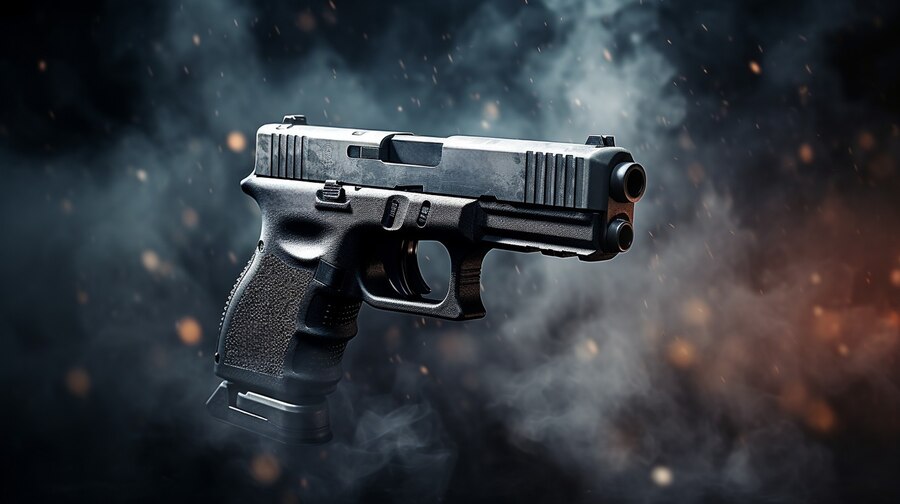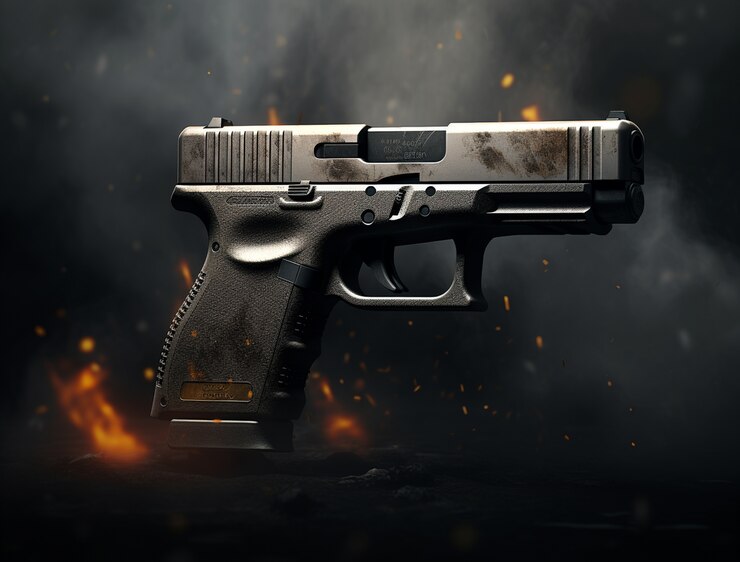Safety First, Shots Later: Prioritizing Protection In The Gun World
6 Mins Read
Published on: 27 October 2023
Last Updated on: 24 February 2025

toc impalement
In the world of firearms, safety takes precedence above all else. The gun business, often associated with power and responsibility, understands that the stakes are high, and every action involving firearms must be executed with an unwavering commitment to safety. Firearms safety is not just a box to check but a foundational principle that underpins the industry.
The top priority for all stakeholders in the gun business, from manufacturers to retailers, is ensuring that firearms do not fall into the wrong hands and that those who possess them are well-informed about safe handling and responsible usage. The consequences of negligence can be devastating, making safety an imperative concern for everyone involved.
One way to ensure that safety standards are met is by turning to trusted platforms and licensed retailers, such as Arms Directory. Online communities of this sort serve as gateways to responsible gun ownership, guiding enthusiasts to businesses that adhere to stringent safety regulations and ethical practices. By relying on these platforms, gun buyers can rest assured that they are dealing with professionals who prioritize safety, both in the products they provide and the education they impart to customers.
In this article, we will explore why firearms safety stands as a paramount concern in the gun business. We will also underscore the importance of turning to licensed dealers to promote responsible gun ownership and help keep our communities safe.
The Importance Of Gun Safety
The consequences of firearm accidents are nothing short of catastrophic. Lives can be irrevocably altered, and families can be shattered in mere seconds. The importance of gun safety is not just a matter of good practice; it’s a matter of life and death. Understanding and adhering to strict safety protocols is the linchpin of responsible gun ownership, and it is essential for preventing these life-altering accidents.
Firearm accidents can result in injuries or fatalities, leaving victims and their families to grapple with physical and emotional trauma. Moreover, accidents involving firearms can also lead to legal consequences, ranging from criminal charges to civil liabilities. These repercussions highlight the urgent need for every gun owner to prioritize safety.
Proper gun safety can prevent these tragedies. It acts as a formidable shield against accidents by instilling a culture of awareness, responsibility, and knowledge among firearm owners. The key to achieving this level of safety lies in education and training. Gun owners must be well-versed in the safe handling, storage, and usage of firearms.
7 Rules Of Firearm Safety
When it comes to firearms, safety should always be at the forefront of your mind. The responsible handling and use of guns require strict adherence to a set of fundamental rules that have been developed over time to prevent accidents and ensure the well-being of all individuals in the vicinity of firearms. These rules are not optional; they are non-negotiable, and every gun owner should internalize them.

Here, we will discuss these crucial rules and why they are essential for safe gun handling.
1. Treat Every Gun as if it’s Loaded
This is the cardinal rule of firearm safety. Regardless of whether you or someone else can confirm it’s empty, always treat a gun as if it is loaded. This mindset instills a habit of constant vigilance and ensures that you never become complacent with the status of a firearm.
The rationale behind this rule is that mistakes can happen, and relying on memory or trust alone can lead to disaster. By adhering to the principle that a gun is always loaded, you automatically engage in safe practices such as keeping the muzzle pointed in a safe direction and never placing your finger on the trigger when you don’t intend to fire. In essence, this rule is the cornerstone of all other firearm safety rules.
2. Never Point at Anything You Don’t Intend to Shoot
The second rule is simple yet vital. The muzzle of a firearm should never be pointed at anything you do not intend to destroy. Whether a firearm is loaded or not, this rule applies at all times.
The significance of this rule becomes apparent when you consider the potential consequences of neglecting it. Accidentally pointing a firearm at someone or something you don’t intend to harm can lead to catastrophic accidents, even if the gun is unloaded. Mishaps can occur, and mechanical failures are always a possibility.
By adhering to this rule, you create a safety zone in which the firearm is always directed away from people and valuable objects. This minimizes the risk of harm and serves as a barrier against unintentional discharges.
3. Keep Your Finger Off the Trigger Until Ready to Fire
The trigger is the sole mechanism that discharges a firearm. Keeping your finger off it until you are prepared to fire is another core rule of gun safety. Your trigger finger should always rest alongside the frame or receiver of the firearm.
This rule prevents accidental discharges resulting from involuntary muscle contractions or momentary lapses in attention. It serves as an essential barrier against firing a shot when it is not warranted. Whether you are loading, unloading, or simply handling the firearm, your trigger finger should remain clear of the trigger guard.
This rule reinforces the idea that firearms are tools designed for specific purposes, and their primary function is to launch projectiles. Until you consciously intend to use them for that purpose, they should remain inert.
4. Know Your Target and What Lies Beyond
Firearms have a significant range and can project projectiles over distances that make it vital to understand the potential consequences of each shot. The fourth rule dictates that you must always be aware of your target and what lies beyond it.
Bullets can penetrate through objects and continue on their path, potentially causing harm to unintended targets. Firing into the air, for example, can lead to the bullet falling back to the ground at lethal speeds. Therefore, knowing what is in the line of fire and ensuring that your bullets won’t endanger innocent bystanders or damage property is crucial.
By practicing this rule, you take responsibility not only for your target but also for the surroundings, minimizing the risk of unintended damage or injury.
5. Keep Firearms Secure
When firearms are not in use, they should be securely stored to prevent unauthorized access and enhance safety. This means locking them in a gun safe or cabinet and considering additional security measures like trigger locks. To further improve functionality, a Gun Safe Electrical Outlet Kit can be a valuable addition, allowing you to power dehumidifiers, lighting, or other electronic accessories inside the safe.
Secure storage is particularly important when there are children or individuals who are not familiar with firearms in your home. It ensures that only authorized individuals have access to firearms, promoting a safe environment.
This rule also aligns with the legal obligations regarding firearm storage in many jurisdictions. Failure to secure firearms properly can result in legal consequences.
6. Obey Firearms Laws and Regulations
Adherence to local, state, and federal laws and regulations pertaining to firearms is fundamental. Every gun owner should be well-informed about the specific laws in their area, including regulations related to purchasing, owning, and carrying firearms.
Compliance with these laws ensures that you remain on the right side of the law and can help prevent accidents or incidents that may lead to legal repercussions. Ignorance of the law is not a valid defense, so it’s essential to stay informed and follow the rules that govern firearm ownership and usage.
7. Use Proper Ammunition
The use of correct ammunition for your firearm is imperative. Using the wrong type of ammunition can result in dangerous malfunctions, including misfires, hangfires, squibs, or catastrophic failures.
Firearms are designed to function with specific types of ammunition, as indicated by the manufacturer. Using ammunition that does not match the firearm’s specifications can lead to catastrophic consequences. Always check the markings on your firearm and the ammunition packaging to ensure compatibility.
Using the correct ammunition not only ensures the safety of the firearm but also enhances its performance and accuracy, contributing to a safer shooting experience.
Conclusion
In the world of firearms, safety is paramount. The fundamental rules of gun safety are the bedrock of responsible gun ownership. Treating every gun as loaded, never pointing it at anything unintended, and keeping fingers off triggers are not mere suggestions but unwavering standards. Understanding the severe consequences of neglecting these rules underscores their significance.
Ongoing education and training are the keys to ensuring gun owners remain knowledgeable and responsible. A culture of safety is not a destination but a continuous journey. Embracing these principles is not just a choice; it’s a moral obligation that protects lives and preserves the integrity of the gun community.
Read Also:


















Comments Are Closed For This Article